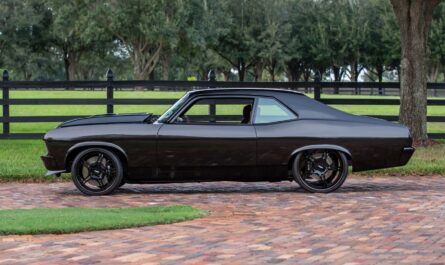It was also the fastest production car in the world upon its introduction, with a top speed of 170 mph (274 kph) in supercharged form.
Then there’s the 1920s Commander, which also set a long list of speed and endurance records. At the same time, the Golden Hawk was the only American car capable of giving the Chrysler 300 “letter series” a run for its money.

The company also revolutionized the station wagon segment with the Wagonaire, which featured a “roll-roof,” and pioneered the compact muscle car with the Super Lark. Did I mention that Studebaker was also one of the first automakers to produce electric vehicles in the US?
Then there’s the Champion, one of the brand’s longest-running nameplates. Introduced in 1939 as a full-size car, it remained in production until the US joined World War II in 1942. The nameplate returned in 1946 and soldiered on until 1958. In 1952, Studebaker moved it into the midsize market.
The fourth-generation Champion (1953-1956) is perhaps the most common, but the third-gen version stands out thanks to an extensive redesign it got for the 1950 model year.

That’s when Studebaker launched its “Next Look in Cars” design strategy to counter the new vehicles coming from Ford, Chrysler, and General Motors. Featuring a three-point front fascia with a bullet-style nose, the 1950 Studebaker was quite radical at the time.
Come 2023, the early 1950s Champion is one of my all-time favorite American cars, but I’m not here to talk about the so-called “bullet-nose” Studebaker. I am here to discuss the late 1940s version that’s often overlooked. In fact, these cars are so rare that I haven’t seen one in many years.
I just couldn’t help but get excited when the folks at “WD Detailing” got a barn-found example for a complete makeover.

The Studebaker also comes with an interesting story. Parked for a whopping 43 years, it was found by an 18-year-old. And the owner is so crazy about it that he already sold his modern car to use the money to turn the Champion into a daily driver.
Why would someone want to drive a 74-year-old vehicle daily? Well, this guy is obsessed with the 1940s. Not only does he dress like it’s the said decades, but his house is also decorated to reflect the period. He’s clearly passionate about antique stuff but also claims he can’t connect with modern things.

The video below also includes a brief interview in which he talks about that, but more importantly, the footage also shows the Studebaker getting a much-deserved cleaning. Not surprisingly, for a vehicle that sat for more than four decades, the Champion is dirty and infested by rodents.
But amazingly enough, the body is still in one piece, and there’s almost no rust to worry about. The floors are also intact despite the massive rat nests our host discovered under the rear seat.

The 170-cubic-inch (2.8-liter) inline-six under the hood, the only powerplant available in the Champion at the time, is a bit rusty, but I bet it would come back to life with a rebuild.
All told, this classic needs a lot of work and a serious amount of cash to get back on public roads, but it’s one of those rare Studebakers worth saving. Until that happens, watch it getting a much-deserved cleaning in the video below.

